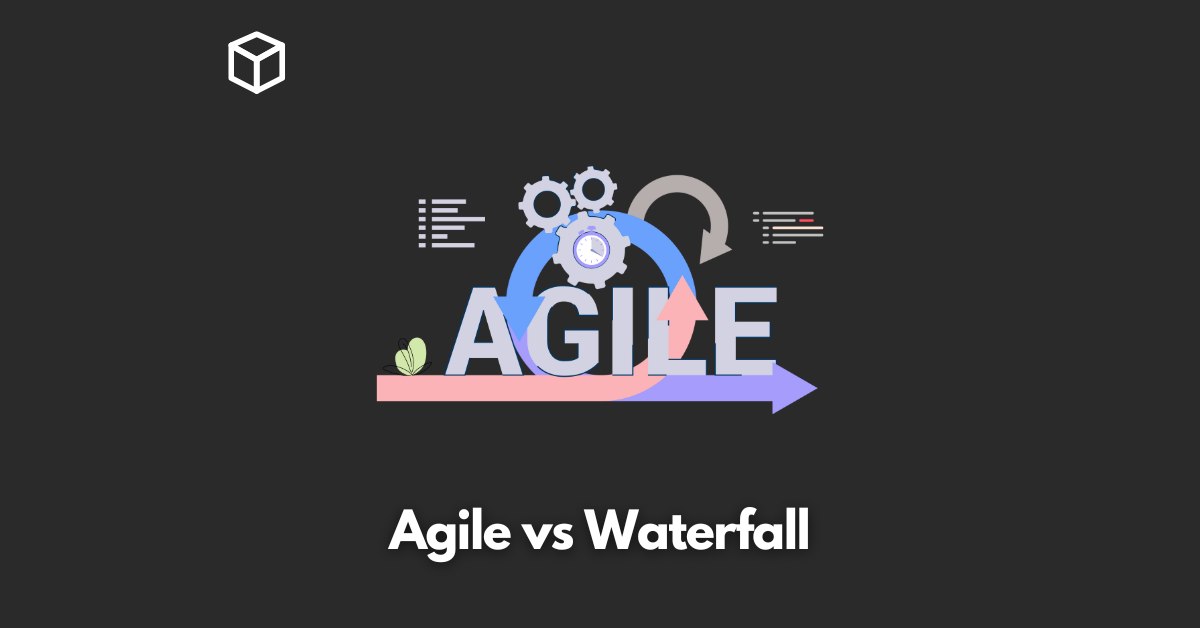When it comes to managing software development projects, there are two main methodologies that teams often turn to: Agile and Waterfall.
Both Agile and Waterfall have their own set of principles, advantages, and disadvantages.
In this article, we’ll take a deep dive into Agile and Waterfall methodologies, compare them, and help you determine which one is the best fit for your project.
Agile Methodology
Agile is an iterative and adaptive approach to software development. It emphasizes flexibility, collaboration, and customer satisfaction.
The Agile manifesto, which was first introduced in 2001, outlines four key values: individuals and interactions, working software, customer collaboration, and responding to change.
These values drive the Agile approach, which is centered around incremental delivery, regular retrospectives, and continuous improvement.
One of the most popular Agile frameworks is Scrum. Scrum teams work in sprints, which are typically two to four weeks long.
During each sprint, the team defines, develops, and delivers a potentially shippable product increment.
Scrum also includes ceremonies such as sprint planning, daily stand-ups, sprint review, and sprint retrospective to ensure the team stays on track and continuously improves.
Advantages of using Agile include
- Flexibility and adaptability to changing requirements.
- Faster delivery of working software.
- Increased collaboration and communication among team members.
- Greater customer satisfaction.
Waterfall Methodology
Waterfall, on the other hand, is a linear and sequential approach to software development. It follows a strict set of phases, with each phase building upon the previous one.
The phases of the Waterfall methodology are typically: requirements gathering, design, development, testing, deployment, and maintenance.
The Waterfall approach is best suited for projects with well-defined and unchanging requirements.
It is also a good fit for projects where the end product can be clearly defined and there is a high level of predictability and control.
Advantages of using Waterfall include
- Clear and well-defined phases.
- Improved control over the project.
- Better suited for projects with fixed and unchanging requirements.
Comparing Agile and Waterfall
While both Agile and Waterfall have their own set of advantages, they also have some key differences.
Agile is more flexible and adaptable to change, while Waterfall is more linear and structured.
Agile is better suited for projects with changing requirements, while Waterfall is better for projects with fixed requirements.
One of the main differences between the two methodologies is the way they handle change. Agile encourages change and adaptation, while Waterfall is more rigid and change-averse.
Another key difference is that Agile focuses on delivering working software quickly, while Waterfall focuses on delivering a final product.
Choosing the Right Methodology
When it comes to choosing the right methodology for your project, there is no one-size-fits-all answer.
The best approach is to evaluate the project requirements, constraints, and goals to determine which methodology is the best fit.
If your project has well-defined and unchanging requirements, Waterfall may be the way to go.
On the other hand, if your project is more open-ended and you need to adapt to changing requirements, Agile may be the better choice.
Conclusion
In conclusion, both Agile and Waterfall methodologies have their own set of advantages and disadvantages.
Agile is better suited for projects with changing requirements, while Waterfall is better for projects with fixed requirements.





